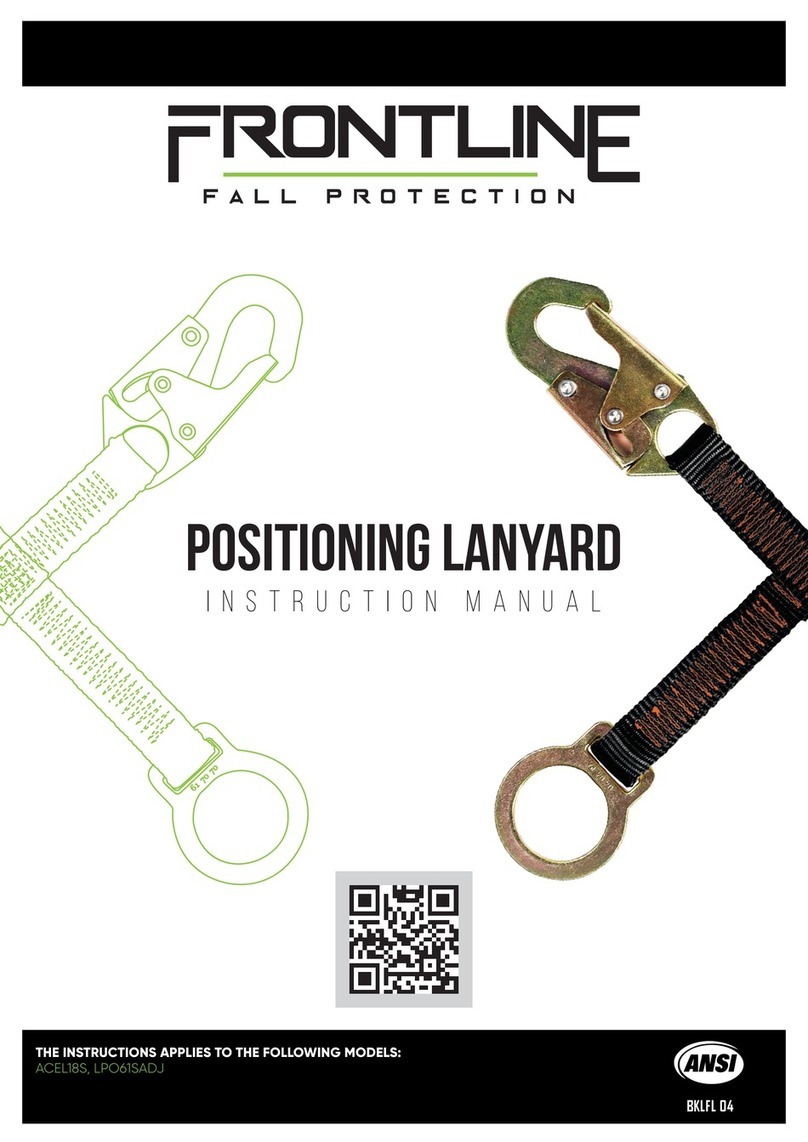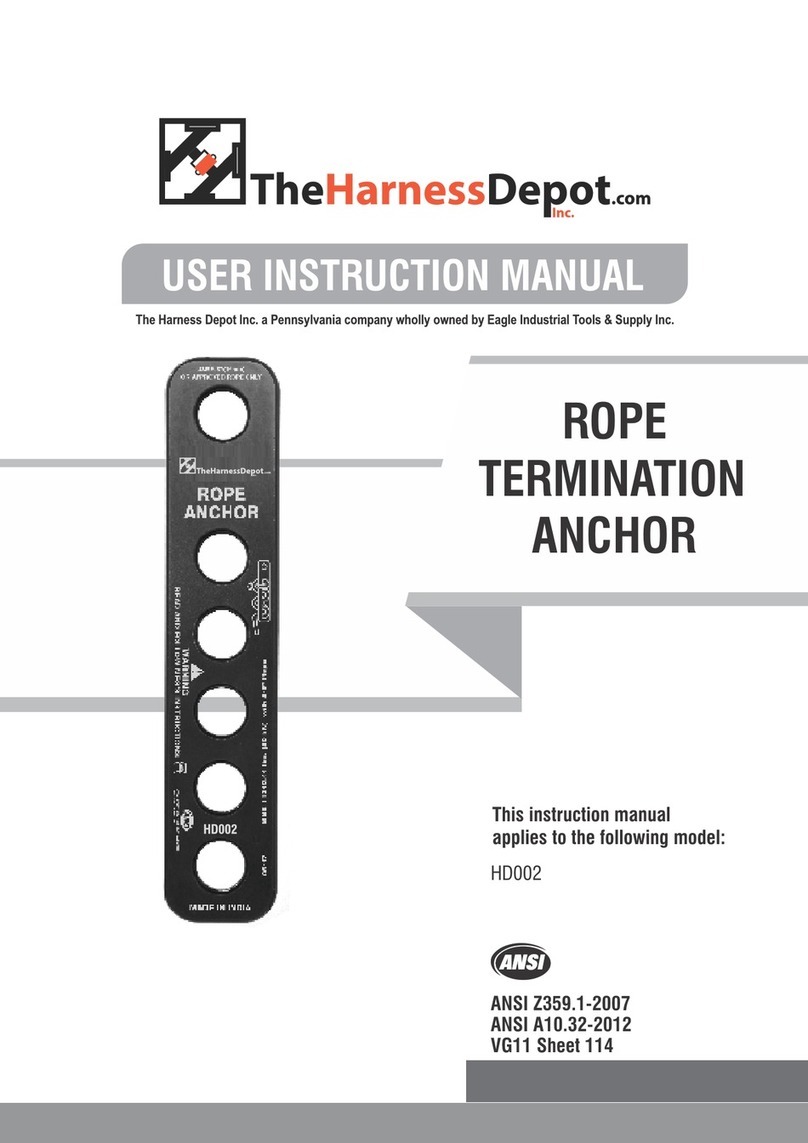
5
Rev.C1 of 210602
1
.
Limitations for Use
n This equipment is designed to be used in temperatures ranging from -40°F to +130°F (-40°C to +54°C).
n Do not expose this equipment to chemicals or harsh solutions that may have a harmful effect. Contact PALOMA with
any questions.
n Use caution when working with this product near moving machinery, electrical hazards, sharp edges, or abrasive
surfaces, as contact may cause equipment failure, personal injury, or death.
n Minors, pregnant women, and anyone with a history of back and/or neck problems should not use this equipment.
n Do not use or install equipment without proper training from a “Competent Person”.
n Only PALOMA, or entities authorized in writing by PALOMA, shall make repairs or alterations to the equipment.
n Full Body Harness is designed for users with a maximum capacity up to 310 lb. (140 kg) including clothing, tools, etc.
n Full Body Harness shall be used as part of personal fall arrest system that limits the maximum free fall distance to 6 ft.
(1.8m). If used with appropriate connecting system, Full Body Harness may be used with free falls exceed 6 ft. (1.8m).
n Full Body Harness shall be used as part of controlled descent or rescue system that eliminates free fall unless attached
to the dorsal D-ring. When attached to the dorsal D-ring, the maximum free fall distance is 6 ft(1.8 m).
n Full Body Harness shall be used as part of work positioning system that limits the max free fall distance to 2 ft.(0.6 m).
n If harness have a dorsal extender, it is just carrying SRL on working, and not use for fall arrest.
n Only use components rated for the same weight capacity or Higher. Not all fall protection components are rated for
the same user weight capacity.
n Proper precautions should always be taken to remove any obstructions, debris, material, or other recognized hazards
from the work area that could cause injuries or interfere with the effective operation of the system.
n Do not use fall protection equipment for towing or hoisting.
n Protect all synthetic material from slag, hot sparks, open flames, or other heat sources.
n Evaluate space below work area to ensure potential fall path is clear of obstructions.
n Allow adequate fall clearance below the work surface.
2. Anchorage Requirements
All anchorages to which the Personal Energy Absorbers and Energy Absorbing Lanyards attach must meet the requirements
as following:
Anchorages to which personal fall arrest equipment is attached shall be capable of supporting at least 5,000 lb. (22.2 KN)
per employee attached, or shall be designed, installed, and used as part of a complete personal fall arrest system which
maintains a safety factor of at least two, under the supervision of a qualified person.
The anchorages in a personal fall arrest system must have strength capable of sustaining static loads applied in all
directions permitted by the system of at least:
(a) Two times the maximum arrest force permitted on the system with certification; or
(b) 5,000 lb. (22.2 KN) in the absence of certification.
When more than one personal fall arrest system is attached to the anchorage, the strength in (a) and (b) must be
multiplied by the number of personal fall arrest systems attached to the anchorage.
Anchorages used in controlled descent and rescue systems must be capable of supporting loads of 3,100 ft-lb. (13.8 KN) for
non-certified anchorages or a 5:1 safety factor for certified anchorages per ANSI Z359.4-2007.
Anchorages used in restraint systems must be capable of supporting loads of 1,000 ft-lb. (4.5 KN) for non-certified
anchorages or two times the foreseeable force for certified anchorages per ANSI Z359.2-2007.
Anchorages used in work positioning systems must be capable of supporting loads of 3,000 ft-lb. (13.3 KN) for
non-certified anchorages or two times the foreseeable force for certified anchorages per ANSI Z359.2-2007.
Anchorages should be located as vertically as possible above the user’s head and be positioned as not to exceed the
maximum allowable free fall for the system.






























